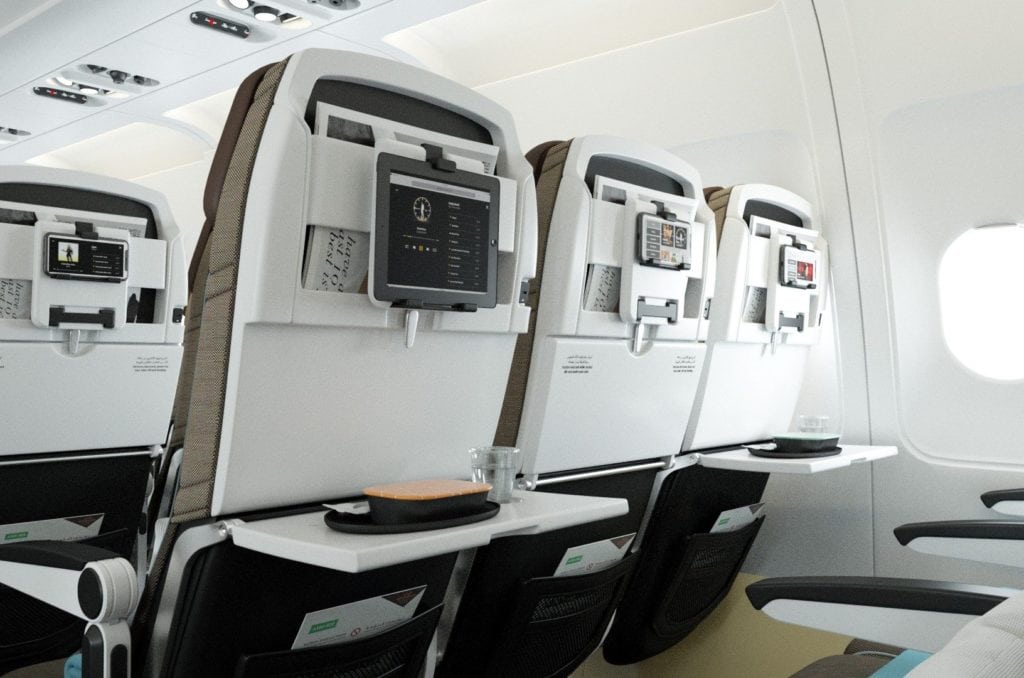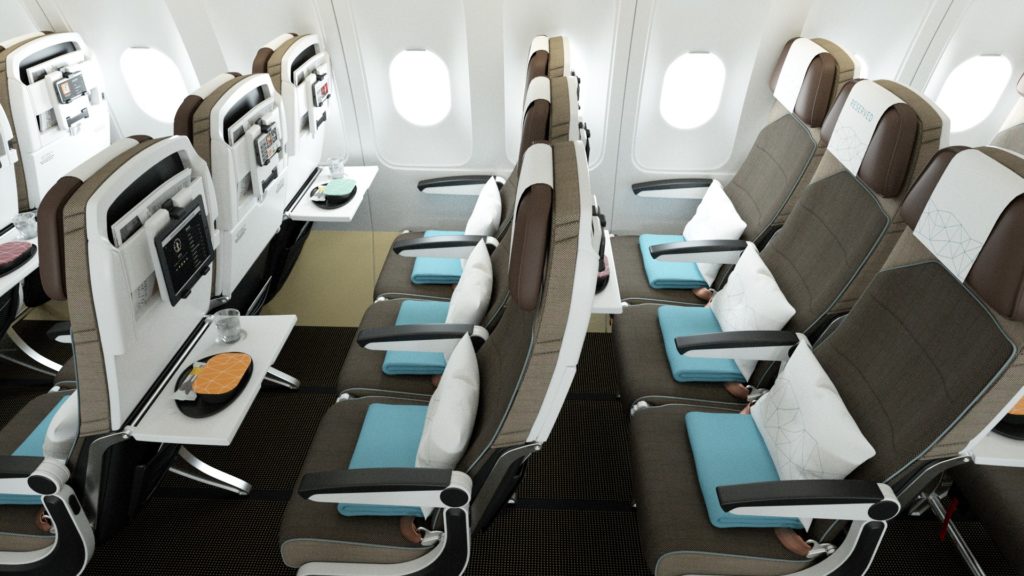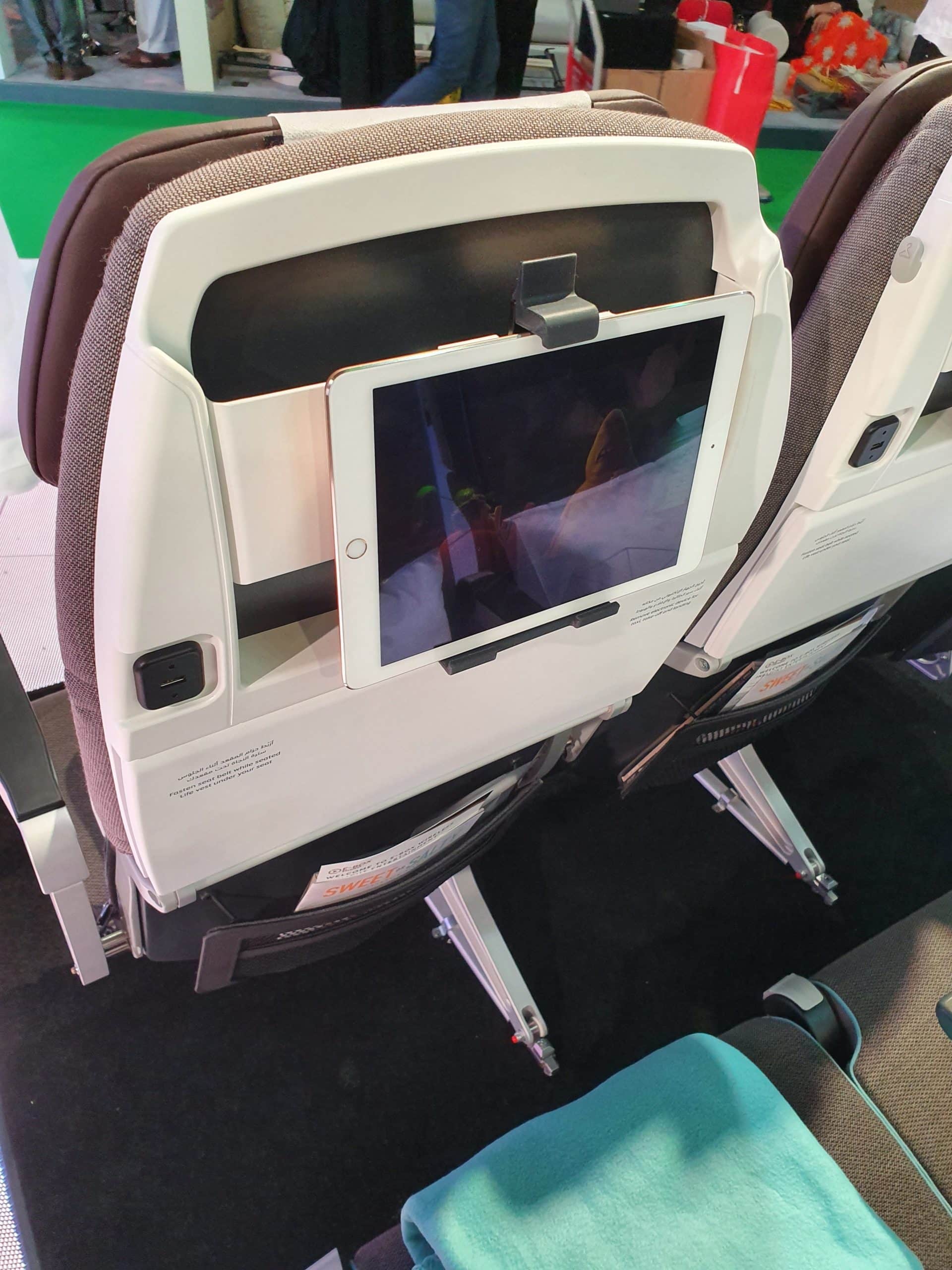Etihad Ditches Seatback Screens in Economy Experience Overhaul
Share

Etihad Airways has responded to the growing demand for economy seats with an overhaul of the cabin experience. Passengers will be introduced to bistro-style in-flight meals and a revamped buy-on-board menu, along with a new slimline seat, which forgoes seatback screens for device holders and high-power USB ports.
Better known for its luxurious offerings for business- and first-class passengers – the epitome being a three-room apartment on an Airbus A380 dubbed “The Residence” – Etihad Airways today unveiled at Arabian Travel Market a new economy cabin experience that includes refreshed in-flight meals and a new buy-on-board menu, and a new slimline seat without seatback screens.
The economy cabin transformation was driven by a high demand for economy seats, Etihad Airways VP Product and Guest Experience Jamal Al Awadhi, explained to APEX Media. The airline was selling out on economy seats on its regional routes. “On shorter flights, people just don’t feel the value of a business-class seat,” he said.

The new seat, from UK-based manufacturer Acro’s Series 6 range which already provides extra knee space and a wider middle seat, has been further customized with a device mount that can be tilted to optimize the viewing angle if the seat in front is reclined. A cable guide prevents wires from dangling in front of the screen when it’s plugged into the adjacent high-power USB port.

“We worked closely with Acro to come up with the mount and to certify it as well as the cable guide because we want a nice, clean look,” Al Awadhi said. Having ditched the previous seatback screens, which will save the airline nearly 20 tons in weight, Etihad will instead offer wireless IFE through Panasonic’s eXW system, which will be accessible via streaming through a dedicated web page or the airline’s E-BOX app.
Regarding Etihad’s decision not to stream entertainment via Internet, Al Awadhi said, “Connectivity for us is not really around to let us deliver our IFE content. For us it needs to be around to enable all sorts of other services to take place within the cabin environment and forward looking. Even for IFE alone, it will never be enough for anything we need to do.”

Food and beverage in the economy cabin will also be refreshed. “We’ve gone away from the hospital style meal tray to something that’s more contemporary, more bistro style,” said Al Awadhi, who says the overall quality and taste of the meals has improved between 20 and 25 percent.
“Sweet or Salty,” the buy-on-board program offered through retail inMotion, emphasizes passengers’ moods for foods of the two palates. Al Awadhi added that special attention has been paid to options for children and health-conscious travelers, and through a collaboration with Bateel, will appeal to the tastes of discerning travelers, too. “They’re very known for their dates but they make all sorts of sweets and confectionary items,” said Al Awadhi. “[Bateel] is really a brand that we want to associate with because they stand for the same level of quality that we do.”
Although Etihad’s premium cabins usually receive all the pomp and circumstance, the airline’s renewed focus in the economy cabin is a sign that supply is driven by demand: In addition to the enhancements to its short-haul fleet, Al Awadhi said the airline will be adding five rows of Economy Space seating on its wide-body aircraft. Customers who select this type of seating have four extra inches of legroom (36 inches of pitch, compared to 32 inches in economy).
“We’re very much known for being a strong premium carrier and we still invest heavily into premium, but we wanted to make a point and say, well, we’re actually investing in the economy experience as well,” Al Awadhi said.
Etihad’s economy cabin overhaul will begin with the retrofit of 23 Airbus A320/A321 aircraft and is expected to be completed in August this year.


